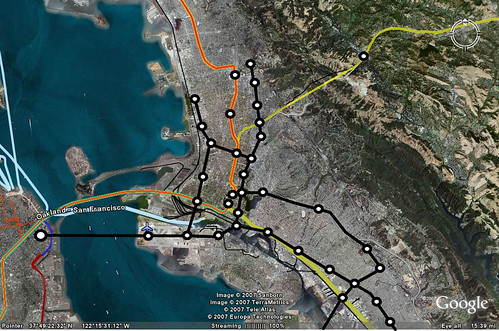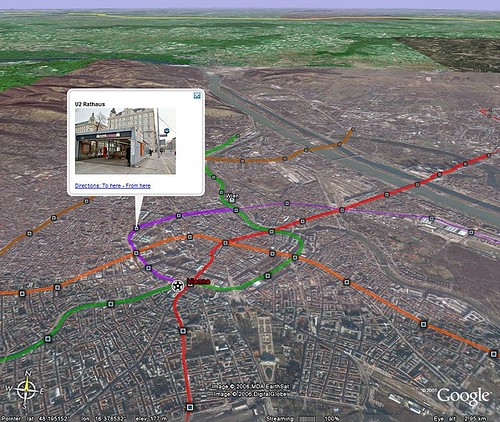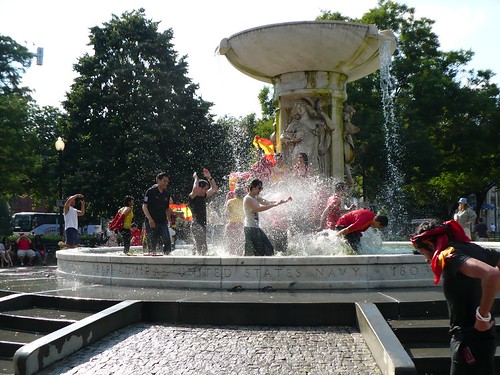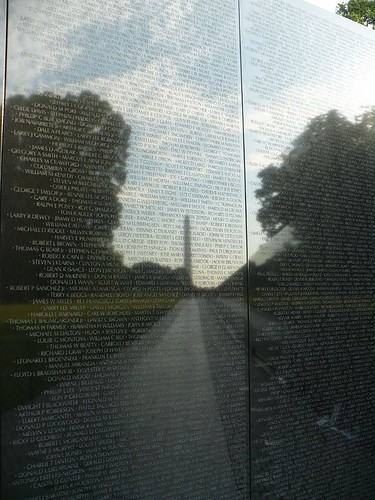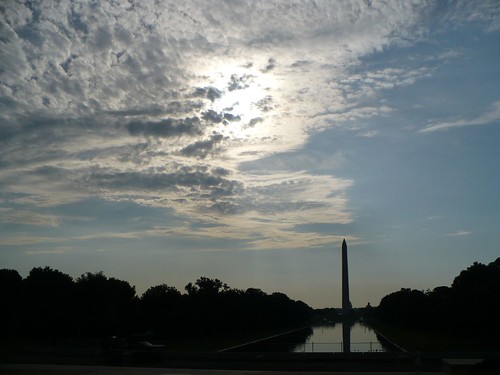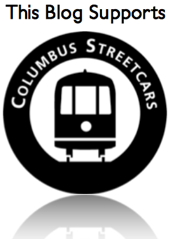Update: I wrote this post last week and this morning right after posting, there is an article in the Washington Post about Mary Peters Ideology when it comes to transit and investment in infrastructure. You can
find it here.
In the
Washington Post there was an article which discussed that even though the Dulles Airport Extension to Metro has gone through all of the hoops that the FTA has set up for it, it might still not get funded. Why? Because the Bushies don't like rail transit. In fact they don't like it so much that they are willing to kill it because of a famous road project that cost way more than it was supposed to and still hasn't delivered on its environmental offsets; The Big Dig.
Federal officials remain skeptical of the plan to extend Metrorail to Dulles International Airport and might reject it, even though their consultants recently found that the proposal meets requirements for full funding, government and project sources said.
Officials with the Federal Transit Administration say they are concerned about the price tag and the specter of another Big Dig, the Boston project built by the same contractor in charge of the Dulles rail line, which took years longer and cost millions more than planned, according to the sources, who spoke on the condition of anonymity because the negotiations are sensitive. In addition, the agency has been reluctant to promote large-scale transit projects.
And what is this comment about moving away from infrastructure as
Quade points out? Surely that can't be true? Why didn't they say the same thing about three other projects in the New Starts pipeline that have big budgets? Seattle's line to the
University($1.6 Billion), New Jersey's
Access to the Core ($7.3 Billion), and the Long Island
East Side Access Project ($2.6 Billion). But the Dulles project is about
$2.06 Billion. So what's the rub? Why pick on this project? This screams a
basic ideological bias. But tell us something we didn't know right? Congressional backers of the project even stated to the Post:
Officials on Capitol Hill, in Richmond and at the airports authority's headquarters have speculated in recent days about what the problem might be. Some say the FTA has long been skeptical of expensive rail projects; in recent years, it has more often championed bus rapid transit projects.
Bingo. There has been no recent evidence to be against big rail projects. In fact does anyone know of a big rail project that hasn't delivered recently? I know the Silver Line BRT in Boston hasn't delivered on promises and locals call it the
Silver Lie but light rail projects in Denver, Houston, Charlotte, Minneapolis and St. Louis have delivered, all of them far exceeding ridership projections.
But basically the DOT is waging an ideological battle. And so far, as Ryan states at
The Bellows quite succinctly, "...they wasted everyone's time and money".
As the linked Post piece makes clear, it’s not the Silver Line’s specifics that are the issue, it’s an ideological opposition to big new transit lines. I think that’s dumb, but I think it’s even more dumb to nonetheless pretend that normal operating rules apply with regard to consideration of big new transit lines only to back out for ideological reasons after all the planning has been done and construction is underway. At any moment during this process, the feds could have said, we’re not going to go ahead with this money, because we don’t like new heavy rail lines. Instead, they wasted everyone’s time and money.
This comes just a few days after the release of a
National Surface Transportation Commission Report panned by DOT Secretary
Mary "Bikes Aren't Transportation" Peters where the dissenting side led by the Secretary claimed falsely that there were
not enough cost-effective rail projects to spend money on. Looks like there is a project in DC that needs some money and has merit. And there are more like it such as the
Subway to the Sea in Los Angeles.
But in addition, there have been rumors floating around that certain pieces of that report pertaining to light rail and electric transit were approved by the commission but taken out mysteriously before the final printing. When learning about pro-rail segments being taken out of the report, Commissioner,Staunch Conservative, and rail advocate
Paul Weyrich stated,
“It is disappointing that after the paragraphs indicated were passed by a nine to three vote that someone without ever asking me would see to it to do away with these important policy considerations, Weyrich said to NCI. “ It is the kind of gutter politics which make people hate their government, and Washington in general."
Now we know where the battle lines are drawn. It's time for a new direction.


